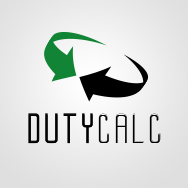Avoiding Duty Drawback Mistakes
Duty Drawback Software | Import Export Consulting | Processing Filing | Full Service
Import and export companies often encounter challenges when filing for duty drawback, a process aimed at recovering customs duties and taxes paid on imported goods that are subsequently exported. Three of the most common mistakes made during this process are explained here.
One of the primary mistakes import-export firms make is failing to maintain accurate and comprehensive records of their import and export transactions. Incomplete or erroneous documentation can lead to discrepancies and delays in duty drawback claims. To avoid this, companies should implement robust record-keeping procedures. They must ensure that all import and export documentation, including invoices, bills of lading, and customs forms, are accurate, complete, and well organized. Regular audits can help identify and rectify any discrepancies promptly.
Another common mistake is missing deadlines. Timeliness is crucial in the duty drawback process. Many companies miss out on potential refunds because they fail to submit claims within the specified timeframes. Each country has its own regulations regarding claim submission deadlines, which are often strict. To avoid this mistake, businesses should establish a clear timeline for claim submissions and closely monitor expiration dates. Leveraging technology, like Dutycalc’s drawback software, can help automate deadline tracking and ensure timely submissions.
Lastly, many mistakes come from inadequate knowledge of regulations. Navigating the complex and frequently changing customs regulations and duty drawback rules can be a daunting task. Import-export companies may make errors due to a lack of understanding of the intricacies of these regulations. To mitigate this, it is essential for companies to invest in ongoing training for their staff involved in customs and trade compliance. Staying informed about changes in trade policies and duty drawback programs is also crucial. Seeking guidance from customs experts or engaging with a customs broker with expertise in duty drawback can help ensure compliance with regulations and maximize refund opportunities.
In conclusion, avoiding common mistakes in duty drawback filings requires import and export companies to prioritize accurate documentation, meet submission deadlines, and stay informed about evolving regulations. By implementing robust record-keeping practices, closely monitoring deadlines, and investing in staff training and expert advice, companies can optimize their duty drawback processes, minimize errors, and successfully recover customs duties and taxes, ultimately improving their bottom line.





